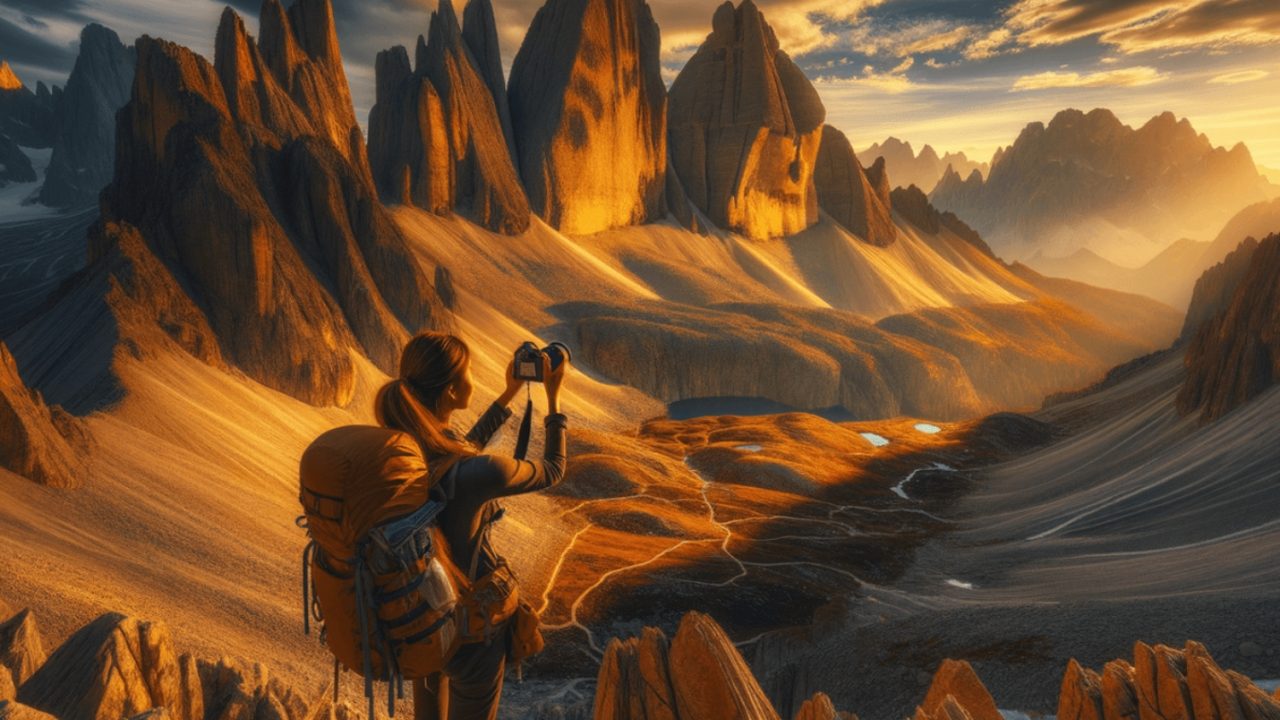Introduction
Mountain expeditions offer some of the most breathtaking landscapes for photographers. With towering peaks, sweeping valleys, and ever-changing weather conditions, these rugged environments provide countless opportunities to capture awe-inspiring images. Whether you’re a seasoned photographer or just getting started, here’s how to take stunning photos during your mountain expeditions.
- Plan for the Best Lighting
Lighting is one of the most important aspects of capturing stunning mountain photos. The best times for photography in the mountains are during the golden hours—early morning or late afternoon—when the light is softer and the landscape is bathed in warm hues. The low-angle sun highlights textures and details, such as snow-capped peaks or dramatic rock formations, creating striking shadows and contrasts. Avoid midday sun, which can be harsh and result in overexposed images. - Capture the Vastness with Wide Shots
Mountains are vast, and wide-angle shots are perfect for capturing the grandeur of these landscapes. Use a wide-angle lens to include as much of the scene as possible, emphasizing the expansive terrain. A wide shot can convey the sheer scale and beauty of the mountains, from the ridgelines to the distant peaks. When shooting these grand vistas, be sure to include a foreground element, such as a path, tree, or climber, to create a sense of depth and perspective. - Focus on Details and Textures
While wide shots are essential for capturing the vastness of the mountains, close-up shots of the landscape’s details can also make for stunning images. Look for interesting textures like jagged rocks, flowing streams, or frost-covered trees. Macro photography of mountain flora or snowflakes can also create beautiful and intimate images that contrast with the broader views. Paying attention to small details allows you to highlight the diversity and intricacies of mountain environments. - Use Dramatic Weather Conditions
Mountain weather can change quickly, often providing dramatic skies, fog, or snow that can add mood and depth to your photos. Don’t be discouraged by overcast or stormy weather—these conditions can create moody atmospheres that enhance your images. If you catch a break in the clouds, you may get stunning beams of sunlight cutting through the fog or illuminating the mountainside. Always have your camera ready to capture these fleeting moments. - Consider Composition and Framing
Excellent composition is key to stunning photography. Use the rule of thirds to position key elements in your frame and balance your shot. Include natural features such as lakes, trees, or trails to guide the viewer’s eye through the image. Leading lines, such as winding paths or rivers, can add depth and draw attention to focal points in the distance. Don’t forget to shoot from different angles to find unique perspectives, whether you’re capturing a mountain peak from below or a panoramic view from a higher vantage point.
Conclusion
Capturing stunning photos during your mountain expeditions requires attention to detail, a keen understanding of lighting, and a creative eye. By planning for the best lighting, focusing on both expansive landscapes and intricate information, using dramatic weather to your advantage, and employing solid composition techniques, you can create breathtaking images that truly reflect the beauty and majesty of the mountains. So grab your camera and start exploring these incredible landscapes through your lens.
#MountainPhotography #AdventurePhotography #LandscapePhotography #TravelPhotography #OutdoorAdventure #NaturePhotography #PhotographyTips #CaptureTheMoment #ExploreNature #MountainExpeditions

 My Account
My Account 


